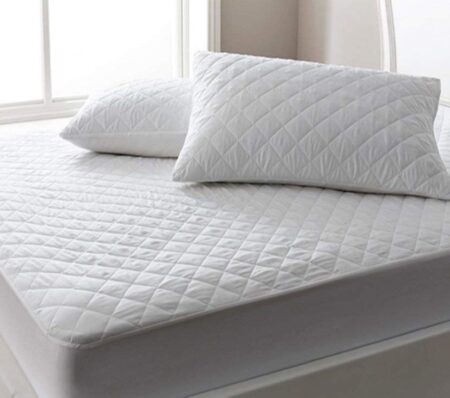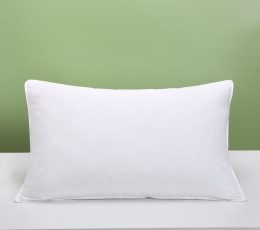There is no denying that changing your single duvet is important for your daily night’s sleep. We know changing that bed makes a drastic change, especially bedding from the UK, as this provides some of the best comfortable duvets and other bedding. We can consider this just by the sales of British Bedding Industry stands for £3.2 billion as it just growing to more in future. So from this often consider about how often should you change your duvet and how to handle the old duvets.
When we are looking for a duvet that helps us to protect ourselves from the winter, there is someone who is looking for a duvet made in summer, so for this, it is firstly beneficial to understand the tog rating, which you can go thoroughly into our duvet tog guide. After that, you should consider this guide before buying any duvets.

How often to change duvet?
The importance of quality sleep cannot be overstated, and a significant contributor to a restful night is the trusty coverless duvet. However, understanding how often you should change your duvet is crucial for maintaining a clean, comfortable sleep environment. Whether it’s adapting to seasonal changes, addressing allergies, or simply refreshing your bedding, knowing when and how to update your duvet can significantly impact your sleep quality.
We suggest changing your duvet every 5 years; this is based on standard bedding which we follow to make our sleep more hygienic. It’s important to invest in quality duvets as the lifespan is going to last much longer than the normal duvet. As many people are currently facing problems with their sleep, the reason includes duvets, which provide less comfort and make it hard for the body to rest.
Summer Sunshine and Sleeping Patterns:
As the seasons change, so do our sleep needs. In the warmer months, the summer sunshine can disrupt sleeping patterns, making it essential to choose the right duvet. Lightweight and breathable options, such as single summer duvet with lower tog ratings, are ideal for summer. These allow for better heat dissipation, ensuring a cooler and more comfortable night’s sleep. Changing to a summer-appropriate duvet helps regulate body temperature, preventing overheating during those hot nights.
We recommend considering the summer duvet based on your body temperature if you feel colder than the average person, you should use the duvet with the mid-level of tog rating like 10.5 Tog duvet and you have to understand is 10.5 Tog duvet good for summer to use.
Winter Cold Spells and Heavy-Duty Duvets:
Conversely, as winter brings cold spells, a heavy-duty duvet becomes a necessity. Duvets with higher tog ratings provide the extra insulation needed to keep warm in colder temperatures. Investing in winter duvets ensures that you remain snug and comfortable when the mercury drops. Before investing into duvets for winter it essential to important what is winter tog duvet. Recognizing the seasonal variations in your sleeping environment allows you to adapt your bedding accordingly, promoting optimal sleep throughout the year.
The winter duvets mainly comes in the ranges of duvets with high tog ratings like double 13.5 Tog duvet or move up to even higher tog rating considering the winter. If you want to get the duvet for the high winter coldness, then the 15 Tog duvet is the best choice as it provides enough insulation for the winter and gives you a proper level of warmth. While buying 13.5 Tog you have to understand is 13.5 Tog duvet too warm to use or gives the best insulation.
Allergies and the Role of a New Duvet:
Allergies can significantly impact sleep quality, and the bedroom environment plays a crucial role in managing allergic reactions. Over time, duvets can accumulate dust mites, pollen, and other allergens. If you suffer from allergies, changing your duvet regularly can be a game-changer. Opting for hypoallergenic duvets and replacing them periodically can reduce allergen exposure, providing a healthier sleep space and alleviating allergy symptoms. We recommend to use the all season duvets for changing the duvets frequently and for that you have to know about the best tog for all season duvet.

Invigorating Your Duvet for Longevity
While, as we said before, the quality duvet increases the life span you have to manage it properly, there are also steps you can take to invigorate it and help extend its lifespan:
- Washing your duvet at least once or twice a year is recommended. Follow the care instructions on the label, use a mild detergent, and choose a gentle cycle. This helps eliminate dust, allergens, and odours, keeping your duvet fresh and clean. It essential to understand how to wash a duvet to get the clean and best duvet for your sleep.
- On a sunny day, take advantage of the natural elements by hanging your duvet outside. The fresh air and sunlight help kill bacteria and remove lingering odours. Be sure to shake it out to restore its fluffiness.
- Employing a duvet cover is a practical way to protect your duvet from stains, spills, and general wear. Duvet covers are easily washable and can be changed regularly, preventing direct contact between the duvet and body oils, cosmetics, or other elements that can degrade the fabric. Consider about how to choose the duvet cover is essential to protect your duvet.
- Between washes, consider using fabric sprays to keep your duvet smelling fresh. Lightly misting the duvet and allowing it to air out can provide a quick refresh, especially during periods when a full wash is not necessary.
- To ensure even wear, rotate your duvet regularly. Additionally, fluffing it up in the dryer on low heat, especially after washing, can help maintain its loft and prevent the filling from clumping. Each of these step is being follow by hotel duvets and to keep them neat.

What to do with old duvets?
Sometimes, we have to understand that the time has finally come to change your duvet, and you get the question of what to do with duvets, so here we discuss some ideas on what to do with your old duvets:
- Consider donating your old duvets to local charities, shelters, or community organizations. Many places welcome clean and usable bedding to support those in need. Your contribution can make a positive impact on someone else’s comfort.
- Local animal shelters often accept old duvets as bedding for animals. Before discarding, check with nearby shelters or rescue organizations to see if they have specific requirements for donations. Your old duvet could provide warmth and comfort to animals awaiting adoption.
- Explore textile recycling programs in your area. Some facilities specialize in processing old textiles, including duvets, into new materials or insulation. By choosing to recycle, you contribute to reducing waste and environmental impact.
- Get creative and repurpose your old duvet into something new. Transform it into pet bedding for your furry friends, use it as cushion stuffing, or create a DIY camping blanket. Repurposing allows you to extend the life of your duvet uniquely and sustainably.
- Consider organizing or participating in a community bedding giveaway. Collaborate with neighbours or local organizations to share gently used bedding items. This not only reduces waste but also fosters a sense of community and support.
Are You Ready to Make a Duvet Change?
Seasonal Adaptation: Evaluate the changing seasons and how they impact your sleep. Consider lighter, breathable duvets for summer and heavier, insulated options for winter. Adapting to seasonal changes ensures that your bedding complements your comfort needs.
Allergies and Health: If you suffer from allergies or health concerns, a duvet change can be particularly beneficial. Opt for hypoallergenic options and choose materials that align with your health requirements. Regularly updating your bedding can contribute to a healthier sleep environment.
Quality and Comfort: Assess the overall quality and comfort of your current duvet. If it shows signs of wear, clumping, or a loss of loft, it may be time for a replacement. Investing in a high-quality duvet ensures a comfortable and restful night’s sleep.
Personal Style: Changing your duvet is also an opportunity to update the aesthetic of your bedroom. Explore new colours, patterns, or textures that align with your style and contribute to the overall ambience of your sleep space.
Environmental Consciousness: Embrace sustainability by choosing eco-friendly materials for your new duvet. Look for options made from organic or recycled materials and support brands that prioritize environmental responsibility in their manufacturing processes.
FAQs
Q: When should I replace my duvet?
The lifespan of a duvet depends on factors such as quality, usage, and care. On average, consider replacing your duvet every 5 to 20 years, depending on these variables.
Q: How often should a duvet cover be changed?
Duvet covers should be changed regularly, ideally every 1 to 2 weeks. More frequent changes may be necessary if the cover becomes soiled or if you have allergies.
Q: How often should you wash your actual duvet?
Washing your duvet once or twice a year is generally sufficient. However, if it becomes soiled or stained, or if you have allergies, more frequent washing may be necessary.
Q: What is the lifespan of a down duvet?
With proper care, a high-quality down duvet can last between 10 to 20 years. Regular maintenance, such as airing, washing, and using a duvet cover, contributes to its longevity.
Q: Should I throw away my duvet?
Instead of throwing away your duvet, consider donating it to a charity or animal shelter or exploring textile recycling options to minimize environmental impact.
Q: How do you know if a duvet is good?
A good duvet is characterized by quality materials, even distribution of filling, and proper construction. Check for a high thread count in the cover and choose a filling that aligns with your preferences for warmth.
Q: Should I wash my duvet or just the cover?
A: Both the duvet and its cover may need washing. Follow the care instructions on the label. Duvet covers are washable and can be changed regularly, while the duvet itself may require less frequent washing.
Q: Are you supposed to sleep with your duvet?
Yes, duvets are designed for sleeping. They provide warmth and comfort, contributing to a good night’s sleep. Choose a duvet that suits your climate and personal preferences for optimal sleep comfort.
Q: How often should I replace my duvet and pillows?
Consider replacing your duvet and pillows every 5 to 20 years, depending on quality, usage, and care. Regularly assess their condition to ensure they continue to provide adequate support and comfort.
Q: How many duvets should you have?
Having at least two duvets allows you to rotate them, extending their lifespan. Consider a lighter duvet for summer and a heavier one for winter, providing flexibility based on seasonal needs.
As from this guide, we hope that it coves your every doubt you have about how often should you change your duvet and get the clear idea about what to do with your old duvets. The new duvet gives you the best sleep and comfort as you should consider which duvet tog is perfect for your 10.5 Tog or 13.5 Tog and you can even consider 13.5 or 15 Tog duvet.





























































